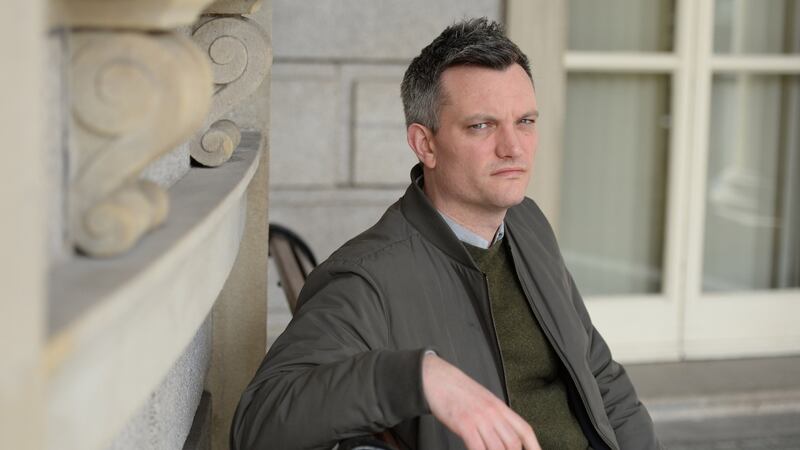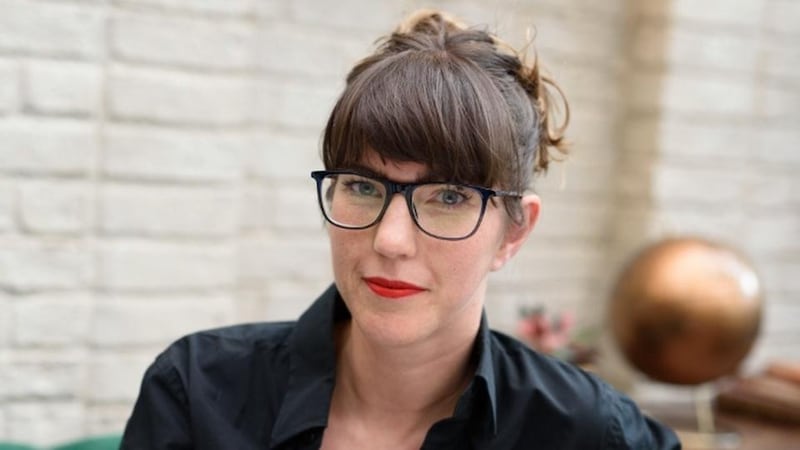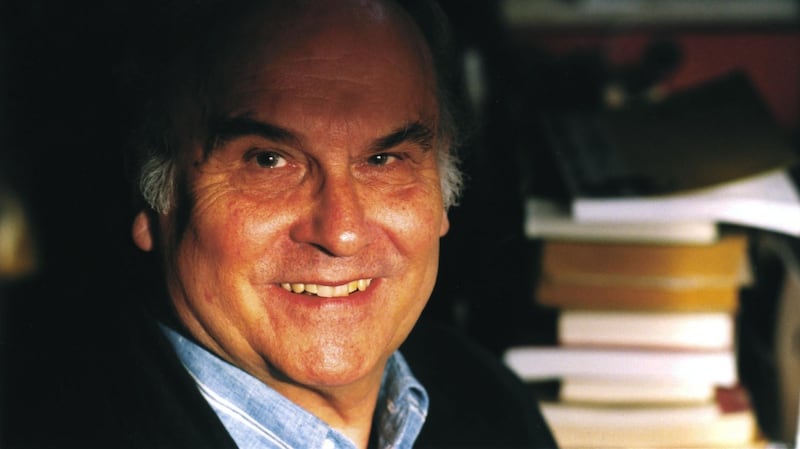Eight or 10 years ago, I started to hear interesting reports from people I know who teach writing. Students, these writers told me, were expressing an impatience with the distinction between fiction and non-fiction. They did not see anything wrong with inventing incidents or altering facts in works that purported to be truthful. For these students, it seemed, the key word in “creative non-fiction” was “creative”, and to be creative was to be free to make things up.
Not long after that, in 2012, a book called The Lifespan of a Fact was published. It contained an essay by John D'Agata about a teenager's dramatic suicide in Las Vegas, juxtaposed with documents supposedly arising from a fact-checker's seven years of work on the piece. As a vehicle for advancing D'Agata's view of non-fiction – that there is an absolute and irresolvable conflict between factual accuracy and art – the book was a tedious failure. But as a piece of literary trolling, it had an odd sort of success.
From the first page, it was clear that the book was not the documentary record of an epic fact-checking exercise, but a dramatically embellished or reimagined version of those documents. And yet, certain smart critics were so furious about D’Agata’s views, or so enchanted by the drama the book staged, that they failed to grasp the fictive nature of the exercise.
Despite its dullness and lack of subtlety, the book effectively exposed a weakness in people's thinking about writing and truth, and it exerted a strange fascination. If you've got the money, you can now see an adaptation on Broadway, starring Daniel Radcliffe.
I have been an editor for a bit over 20 years, and have published a lot of "creative non-fiction". As of 2012, when The Lifespan of a Fact came out, I had never encountered the viewpoint described to me by my friends who taught writing (ie it's okay to make things up in non-fiction), or anything even close to the D'Agata position (ie if it's all true, it's not art). Something was shifting, though. The D'Agata tendency has not gained any purchase with serious writers; but strange and exciting things are happening in the borderlands of fiction and non-fiction.
Dots connected
Whenever I come across someone who questions the usefulness of the distinction between fiction and non-fiction, a part of me feels a bit nervous. Sometimes – connecting the dots between literature and the present political moment – I even feel a bit angry. I am reminded of Rebecca Solnit's take on the subject: "it's a slippery slope from the things your stepfather didn't actually do to the weapons of mass destruction Iraq didn't actually have". But another part of me is awkwardly aware that there is nothing really new about writers – even great writers – trying to claim both the authority of non-fiction and the freedoms of fiction.
If you love immersive and beautifully written reportage, you may be a fan of Ryszard Kapuscinski, who, we now know, had a loose way with facts.
You may admire the wonderful New Yorker writer Joseph Mitchell, who, we now know, published profiles of invented people (with the full knowledge and indeed encouragement of editor Harold Ross, creator of the magazine's famously pernickety fact-checking department).

If, like me, you devoured the astonishing works of Janet Malcolm before reading about the libel case she spent a decade defending (successfully) in the 1980s and 1990s, you were probably disappointed to learn what the case revealed about her methods. She testified that, in the case of one of the contested passages, she had transposed a key quote from a conversation in New York to a lunch in California – and she did not have either a tape recording or a contemporaneous note to substantiate the quote.
Perhaps the single most startling revelation in Patrick French's biography of VS Naipaul – a book with a consistently high startle factor – was the news that although his wife and collaborator, Pat, accompanied him for most of the travels around India that he wrote about in An Area of Darkness (and kept a detailed diary while he kept none), Naipaul suppressed this fact in print. On the page, the pronoun is "I"; in reality, it was "we".
Element of fabrication
Considering this line-up of some of the finest non-fiction writers of all time, you might wonder if there is any point in insisting that non-fiction is incompatible with fabrication. For my part, certainly, I am hoping never to learn from some future biographer that James Baldwin didn't really get thrown in jail for being in receipt of stolen goods, as narrated in his masterful essay Equal in Paris, or that Dervla Murphy didn't really cycle all the way to India.
And if you're anything like me, you might have been a little bit thrilled by a comment made by Joan Didion in a recent documentary film. She was asked about her encounter, in Haight-Ashbury, with a five-year-old child called Susan, who had been given psychotropic drugs by her mother – as described in her essay Slouching Towards Bethlehem. Didion spoke not of the horror of the moment but of its usefulness to her as a writer: "It was gold," she said.
You might wonder if there is any point in insisting that non-fiction is incompatible with fabrication
Some people have recoiled from the pitilessness of this. For my part, I find myself attracted not only to Didion’s willingness to own up to her pitilessness, but also to the more important underlying message: the reality of the world is always strange and dramatic enough for the journalist or the essayist. You’ve just got to put yourself in a position – physically and mentally – to witness it. And then, of course, you’ve got to write it. The way Didion wrote it – in a degree-zero style, suppressing her usual tonal complexity – signalled her deep respect for what she had found:
“For a year now her mother has given her both acid and peyote. Susan describes it as getting stoned.

I start to ask if any of the other children in High Kindergarten get stoned, but I falter at the key words.
‘She means do the other kids in your class turn on, get stoned,’ says the friend of her mother’s who brought her to Otto’s.
‘Only Sally and Anne,’ Susan says.
‘What about Lia?’ her mother’s friend prompts.
‘Lia,’ Susan says, “is not in High Kindergarten.’”
Overloaded consciousness
Would Slouching Towards Bethlehem have been more truthful, and would it have been better, if Didion had owned up in its pages to the writer's lust for such horrors? Perhaps – but it's worth noting that the essay is written in the present tense. "I falter at the key words," she writes. In the moment, we understand, she struggled to speak of such things with a five year old. Maybe it was only later, reviewing her notes or writing the piece, that the "gold" took shape. Or perhaps her faltering was the consequence of an overloaded consciousness: maybe, in the moment, she struggled to speak because she was too excited.
In any case, one of the wonders of Didion’s essays is the way they incorporate the writer’s errors and personal flaws into the reckoning. In lesser writers, this sort of thing can be an annoying tic – you get the feeling you’re reading a disclaimer, or just drowning in swampy subjectivity. But Didion, like other great artists of essay, reportage and memoir, is coolly objective about her subjectivity. She understands that, often, the only way to tell the truth is to be frank about the ways in which you are ill-equipped to do so.
The idea of the “contract” between non-fiction writer and reader is an important one, but the analogy is imperfect. The reader is not a unitary entity. Some readers’ attitude to the non-fiction writer can be summarised as “I am in your hands; do with me what you will.” For others, it’s more like “I am in your hands; don’t you dare lie to me.”
Editing essays, memoir and reportage for the Dublin Review, one of my jobs is to represent the interests of the latter category of reader. We do not have the resources to do comprehensive fact-checking, so I check the most consequential facts and otherwise rely on a sort of smell test. A dodgy truth-claim has a way of revealing itself, even to a reader who has no specialist knowledge of the subject matter. Sometimes this happens on the level of logic, and sometimes on the level of language: a bad passage of writing may be a sign that information has not been properly assimilated by the author.
Authorial invention
I should be clear that I’m talking here about writers getting things wrong in non-fiction – not making them up. In my own editing I have never uncovered authorial invention in a piece of reportage, though of course it is possible that I have been deceived in this regard. As far as I can tell, among serious writers, invention in reportage remains entirely taboo. That is not to say that it doesn’t happen – clearly, it does. But it is rare, and it is done surreptitiously; and when it is uncovered, there is a scandal.

What interests me more these days – as an editor and as a reader – is writing that is rooted largely or wholly in the author's own life-experiences and consciousness. In this realm, the fiction/non-fiction binary is under pressure from both sides of the divide. Some of the best fiction of recent years reads like memoir or essay. Novelists like Teju Cole, Rachel Cusk and Sheila Heti have found compelling ways to transcend the perennial discontents of plot and character.
A dodgy truth-claim has a way of revealing itself, even to a reader who has no specialist knowledge of the subject matter
It may be tempting to take such work as evidence that the distinction between fiction and non-fiction is outdated or just illogical. In some cultures, the binary does not really exist. Aleksandar Hemon has suggested that, in the Anglophone world, the distinction has roots in Puritanism, with non-fiction being seen as morally superior to the mere entertainment of fiction.
But this does not chime with the way fiction is actually talked about in the Anglophone world. Fiction, we are frequently told, can access a deeper truth than non-fiction. After forming part of the jury that awarded a prize to Richard Lloyd Parry for his book about the Japanese tsunami of 2011, the novelist Jim Crace was able to write the following words: "You don't expect a work of non-fiction to express itself with literary beauty, and still hold an unshaking mirror up to real events . . ." Please get in touch, Jim – I've got a few books I'd like to recommend.
The elevation of fiction above all other literary forms is particularly pronounced in Ireland. But here, as elsewhere, things are changing. The idea of launching a writing career with a collection of essays would have been all but incomprehensible for an ambitious Irish writer until very recently; now, as writers like Emilie Pine, Kevin Breathnach and Sinéad Gleeson are demonstrating, it is a real pathway. The species "Irish essayist", long critically endangered, is now in rude health. Remarkable work by new non-fiction writers is turning up unsolicited in my Dublin Review inbox at an unprecedented rate.
Literary art
The brilliant non-fiction writers I work with understand that literary art is not incompatible with telling the truth – and that some kinds of art can be forged only out of an intense engagement with the actual. They understand that memory is fallible, but that this does not mean, as is sometimes glibly asserted, that memoir is indistinguishable from fiction. It is, rather, a report from memory, an account of what is recollected. Most readers are intelligent enough to know that some of what is recollected may not be completely accurate, but that there is a profound difference between this and conscious fabrication.
Only a psychopath could write a piece of non-fiction in which one or other of these qualities was completely absent
These writers understand, too, that objectivity and subjectivity are not antithetical: only a psychopath could write a piece of non-fiction in which one or other of these qualities was completely absent. In order to tell the truth, you’ve got to have a capacity for objectivity. But to write something that is truthful, you have to own your subjectivity, which is the engine of so much of what is valuable in essay, memoir and even reportage.
To be entirely truthful myself, I must confess that these confident assertions of what the writers I work with understand about their craft are, for the most part, extrapolated from the way they write and from our editorial exchanges. Only rarely do we actually discuss the nature and principles of artful non-fiction: we’re too busy doing other things.
This is one of the reasons I'm looking forward to our first Dublin Review Conversations event, at which I'll be talking about these questions with three of the most exciting writers currently at work in Ireland: Roisin Kiberd, Doireann Ní Ghríofa and Mark O'Connell. Each of them is an artist, and each a truth-seeker, taking a deep interest in reality without ever being foolish enough to imagine that they've pinned it down. I fully expect each of them to complicate the picture I've presented here, to raise issues I've never even considered, and to make me, and the audience, feel a bit uncomfortable.
The first edition of Dublin Review Conversations, with Roisin Kiberd, Doireann Ní Ghríofa and Mark O'Connell discussing "Truth, Artistry and the Borderlands of Literature", is on at Smock Alley on Wednesday, November 28th at 6.30pm. Tickets (€5) can be booked via Smock Alley: smockalley.ticketsolve.com/shows/873596116










